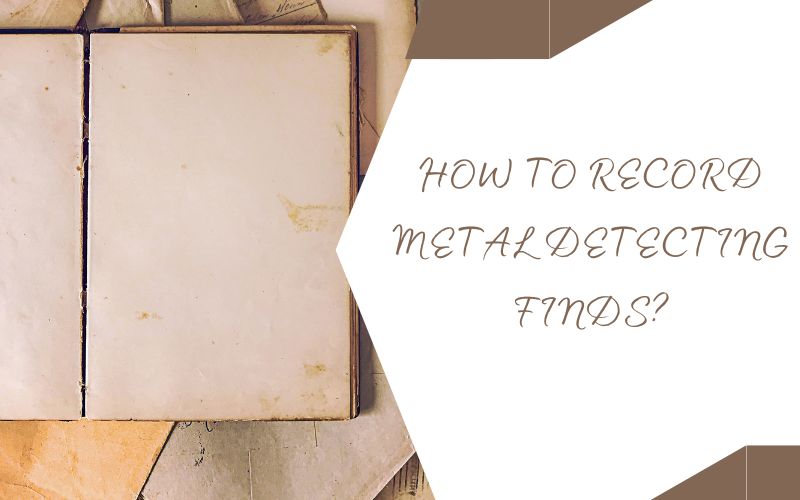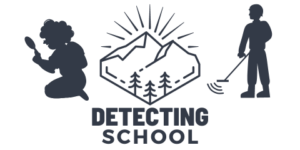
Metal detecting is not only about having adventures, it is also about having treasure trove of memories!
In this article short guide, I share some practical processes of recording and documenting your finds. This will help you create a sweet archive for future reference.
Hope this helps …
Key Takeaways
- Metal Detecting Logbooks are a must for recording your finds and improve your overall experience.
- There are some Digital tools and documentation techniques that you should adopt to enhance your finds preservation & accessibility (in case you have too many finds in your possession)
- Always consider donating significant finds. This will contribute to collective heritage!
Is recording your metal detecting finds worth it?
Yes, 100%. Recording your detection finds is the most effective way to have valuable insights that will enhance your personal understanding of the hobby.
Indeed, recording/documenting information like the type, age, location of finds … will give you unmatchable insight to identify patterns you can rely on to easily find hotspots.
Lastly, think about it … How satisfying and exciting is to have a tangible log of your adventures and discoveries over time?! This makes the whole process even more rewarding.
Don’t forget to always include photographs and detailed descriptions for each find or at least to the most significant ones.
How a metal detecting logbook can help?
A Metal Detecting Logbook (Check out my favorite one) is a very important tool every hobbyist should have.
It will help track meaningful patterns over time, thus, revealing the most productive areas or even times for hunting.
Key entries on your finds, include:
- Type of object (Relic, coin, jewelry …)
- Material (Silver, iron, gold …)
- Depth found in inches
- Exact location (Include a Google Map Tag if possible …)
- …
Of course, you can get creative and add even more details. These are useful and provide insights for future hunts …
Additionally, if you’re a fan of historical items, you can use the logbook to record the provenance of these artifacts.
Of course, a logbook is definitely a personal keepsake … It allows you to revisit your detection journey and enjoy the progress you’ve managed to make over time.
Furthermore, sharing your logbook with other detectorists is a great way to contribute to the community’s collective knowledge.
Digital tools for documenting and organizing finds …
You should not sleep on digital tools … There are several that can help in documenting and organizing your finds:
- GPS Apps: to track your exact location. Many apps allow you to annotate the map with notes about your finds. You can check other apps here.
- Database Apps/Software: Tools like “RelicRecord” or “My Finds” can help to catalog your finds with pictures, descriptions, and additional notes.
- Photo Editing Apps: For the most significant finds, these can enhance their images for better details.
- Online Forums: Websites like “TreasureNet” or “Detectorist” can help you identify finds and share your experiences.
I highly recommend having a look at this useful guide to easily identify metal detecting finds.
Photography tips for capturing your discoveries …
I don’t recommend doing so for every find. Probably the most significant ones are worth Photographing … Indeed, this can really enhance your documentation process. below are some tips:
- Lighting: I personally prefer natural light. It is the best way to capture true colors. Obviously, you should avoid harsh sunlight. Instead, it is better to take pictures in shaded areas.
- Background: I always recommend using a simple or neutral background. This will make the item properly stand out. If such background is not available just use a white sheet of paper.
- Use multiple angles: to capture all sides and provide a complete view.
- Use Props: A ruler or coin can give a sense of scale. A label with the date or location can help with cataloging.
Labeling and storing your finds …
Labeling and storing your metal detecting finds is an important step to properly preserve their condition and easily identify them later. Below are some guidelines:
- Cleaning: Clean gently to maintain their condition. Any harsh cleaning methods could damage your beloved finds. Have a look at these cleaning guidelines.
- Labeling: Use acid-free labels to note your find details. Just include the most important ones like the date and location. You might need to consider a coding system for easy reference.
- Storing: Use individual containers or pouches to store your finds. This will avoid causing damage due to contact. Acid-free boxes or archival-quality plastic bags work just fine.
- Regular Check: Many hobbyists sleep on that … Indeed, you should periodically inspect your collection for signs of degradation … If so, take necessary action.
Consider donating significant finds to museums or historical societies!
Donating some of your most significant finds to museums or historical societies is an amazing way to contribute to the collective historical knowledge …
If you consider doing so for a given find, then contact a local museum or historical society. Describe the object and provide well taken photos (Consider photography tips above).
If they express interest, then make arrangements to donate the object. Some museums might generously compensate you (but don’t expect that though!) …
Always remember to record the location and context of your finds as this information is critical to historians.
It is worth mentioning that doing so is a nice way to give these people a good impression about our hobby!
How can you use your records to improve your metal detecting skills?
Keeping records of your metal detecting hunts is a shortcut to improve your overall skills …
Indeed, those records (location, time, depth, and type of finds …) will lead you to start recognizing trends & patterns!
For instance, you might find certain artifacts more commonly in specific areas or at certain depths. These details, alongside with ground conditions and used settings will pave the way for you to detect similar finds in the future.
Over time, this data will help you to narrow down profitable search locations and optimize your detector settings …
Keep in mind that reviewing ‘misses’ can also help learn from mistakes.
Final Thoughts …
Hopefully, you are now aware of the importance of recording metal detecting finds as well as the meaningful reasons behind it.
One last detail I didn’t address in this article is regarding displaying your finds. For this, I recommend having a look at these tips and guidelines to properly display your finds. I think you’ll find those helpful!
